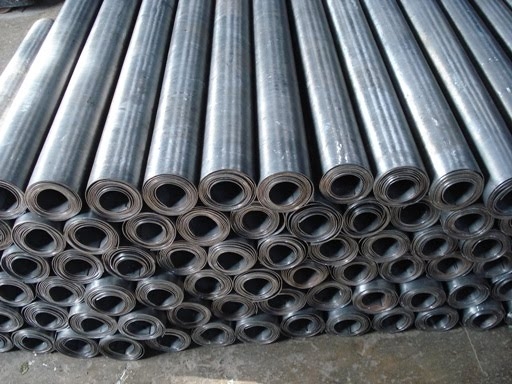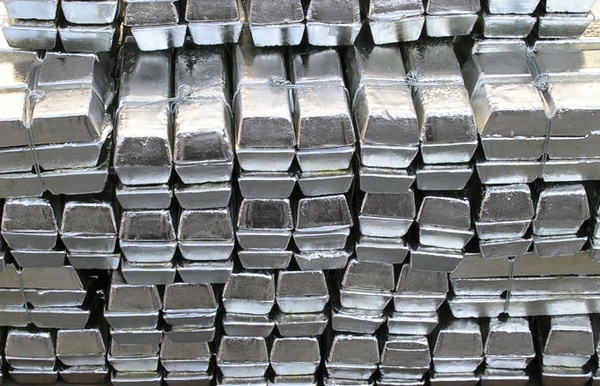Lead is a malleable and soft metal, due to this it is applied in many industries for different needs. It has been in people's use since times of ancient Rome and Greece. Nowadays, with increasing lead consumption, natural sources of lead are plummeting very fast, therefore lead scrap is an attractive product for scrap dealers even at the time of considerable metal price slumping.
Lead industry in the United Kingdom
Lead production is known to people for many centuries. Its first usage dates back to times preceding the early Bronze Age, when lead got wide advancement being used with antimony and arsenic. Due to its chemical nature, lead is malleable and soft and therefore is simple to operate. Lead is estimated to make up only about 0,0013% of Earth's crust, but it is not considered as rare metal, as lead is quite easily mined, produced and refined.

Lead manufacturing was an important part of ancient Rome economy, where it was obtained mainly as by-product of extensive silver smelting. They use it for water pipes constructing, some of which are still in operation today. Romans brought lead producing to the British Isles. In those times lead production was closely connected to tin manufacturing, up to 17th century there was no strict distinction between these metals, tin was referred to as plumbum candidum (bright lead) and lead itself was called plumbum nigrum (black lead).
Lead may be found in nature in free state, but usually it is obtained from different metal ores. Most ores contain less than 10% of lead, ore with only 3% of lead still may be exploited. Depending on the type of ore, different technologies are applied. After roasting or smelting in blast furnace, lead still contains significant amounts of contaminants, such as arsenic, antimony, bismuth, gold, etc, which are extracted on the consequent stages of lead processing. The purest lead is obtained by processing lead electrolytically.
Lead recycling and scrap trading in the United Kingdom
Lead is used in a number of spheres of application. It is a necessary option in building and a main component in lead-acid batteries; weights, bullets are made of lead. Lead's high density makes this metal an effective shield from nuclear radiation. Lead is a constituent of a wide range of alloys. Solder, half lead and half tin alloy, is used for joining of electric components, pipe and metallic items. Alloys with smaller application area are antimony and babbit metal.
Lead consumption grows on a regular basis nowadays, which suggests very rapid exhaustion of its natural sources. Consequently, lead scrap recycling is currently gaining exceptional topicality.

Due to lead's high resistance to corrosion, lead items may be recycled centuries after they were manufactured. As of today, up to half of world's lead is produced of recycled scrap and this figure is forecasted to grow, as the growing lead consumption suggests increasing volumes of used and out-of-run lead commodities for recycling.
Sources for lead scrap are numerous. The major source in Britain and throughout the world is lead-acid batteries. Lead, obtained from this source, amounts to 90% of all the recyclable lead in the world, though when considering Europe, this figure is a bit lower and is proportional to the number of vehicles in the region under consideration.
The process of battery-recycling has changed significantly over the past decade or two. These changes were brought about by the advancement of battery-processing technologies and alloys contained in them. New environmental regulation also influenced the process. Batteries are collected by scrap dealers from individuals and from automobile scrap traders and then are sold to battery breakers and smelters. The process of battery breaking has undergone a lot of advancement recently and become safer and more effective. Nevertheless, it is crucial to observe the safety procedures, as lead-acid battery recycling is followed by a great risk of lead poisoning and contamination. In this context it is worth mentioning, that a strict environmental legislation exists stipulating requirements for lead-acid battery breaking and processing. Consequently, many battery breakers were declined markedly. Lead-acid batteries are broken mainly at the lead smelters as of today.
Other sources for lead scrap are power wires and cables, lead pipes and sheets, weights and other metal scrap containing lead. The lead recycling process is performed by means of different complex technologies implying a number of smelting facilities, such as blast furnaces, short rotary furnaces, rotary kilns, electric furnaces, etc.

International Resource Panel assessed the global per capital lead consumption at about 8 kg. According to statistics, with the current 2% groth of lead consumption, the world is about to run out of natural lead in the nearest several decades. Thus, lead scrap recycling appears to be the most sustainable source for lead production.
Lead prices in the United Kingdom
Lead market is not stable. It falls under influence of numerous factors, such as global currencies fluctuations, global demand, production and prices, often imposed by the leading producing countries.
Currently, the price situation on the lead market is similar to those of other metals. The supply outpaces the demand, which makes the prices go down in Europe, the USA, China and Korea. Though, the situation on lead market is not as critical as with steel or aluminum trading, slumping prices still put a lot of pressure both on lead smelting companies and or scrap dealers. In this condition, small scrap collecting enterprises and individual dealers suffer the greatest losses. Unless the situation changes, it'll become unprofitable for them to deal with lead scrap recycling.
Reference information
International Resource Panel is an international organization aimed at sustainable economic and environmental development. It was founded in 2007. The main objectives of the International Resource Panel are the following: to assess the volumes of raw material reserves, to evaluate the environmental impacts of human activity and develop sustainable strategies of economic and environmental development.
